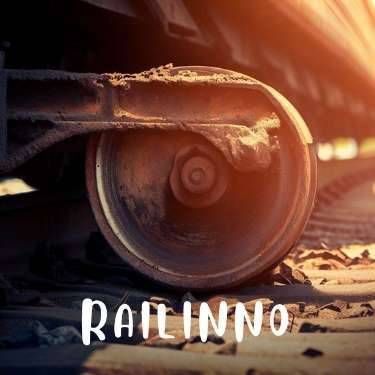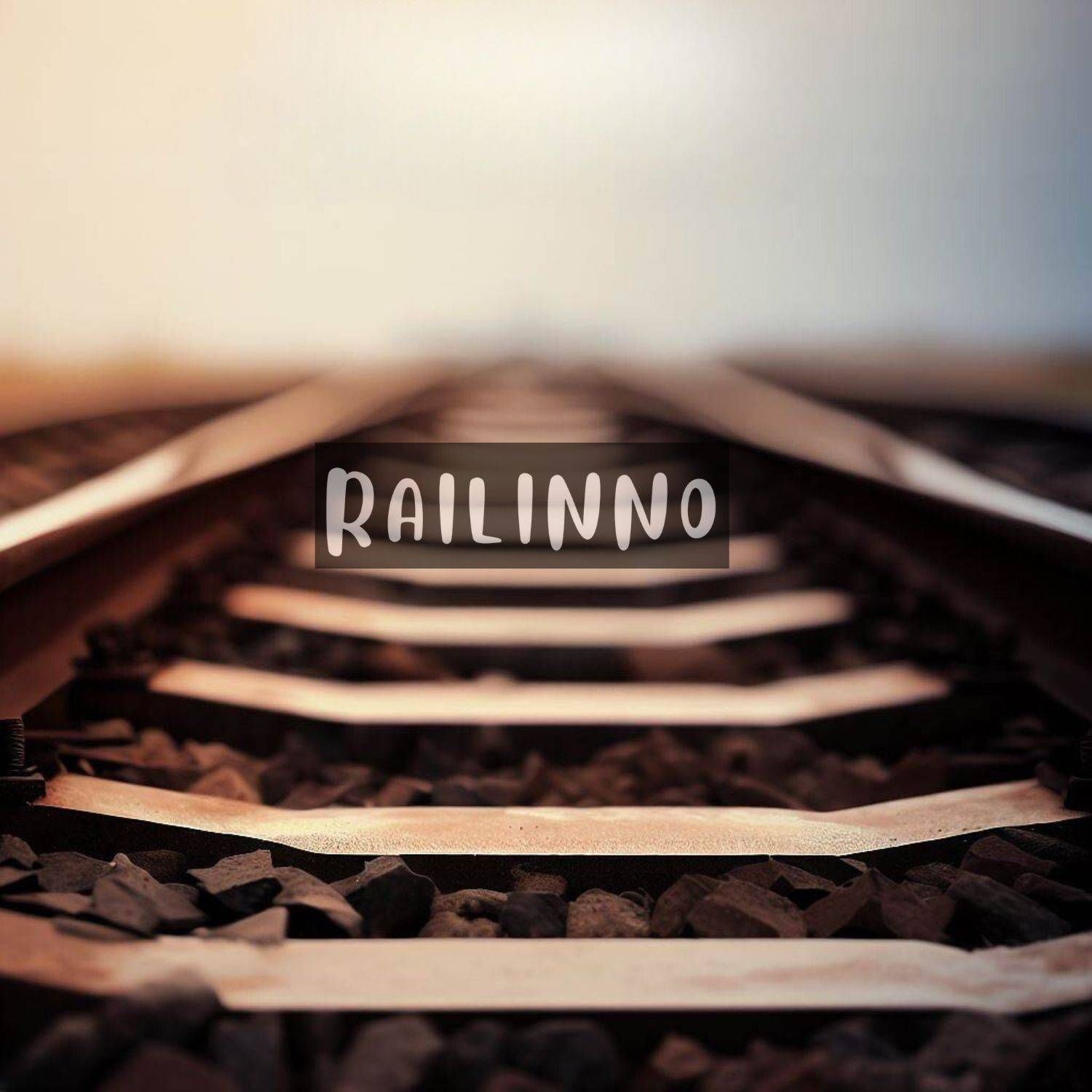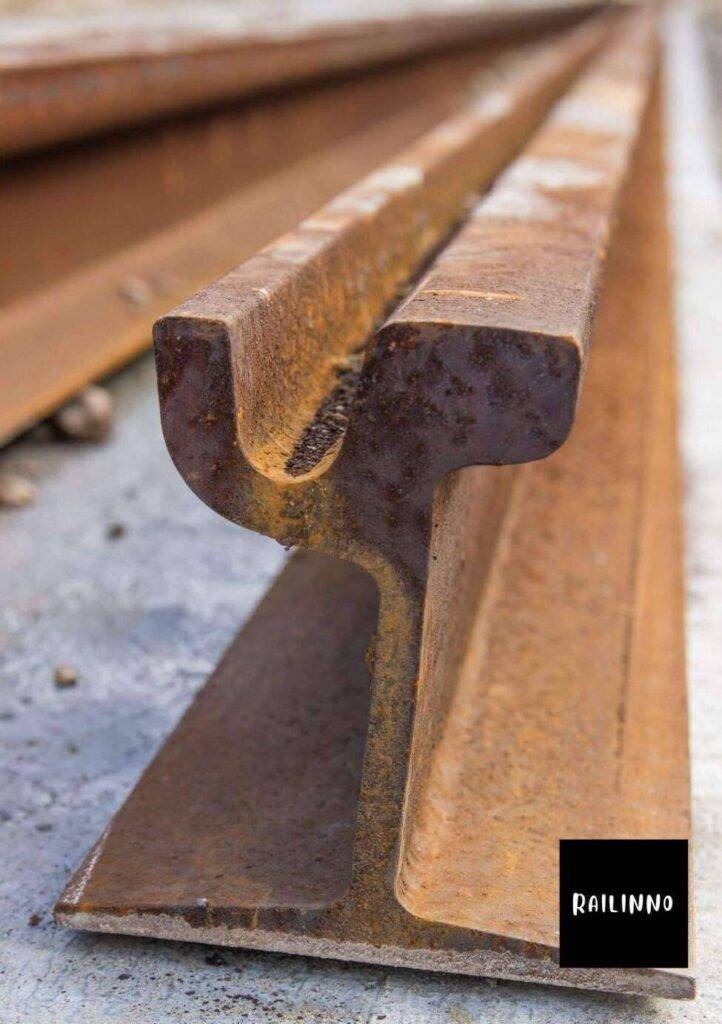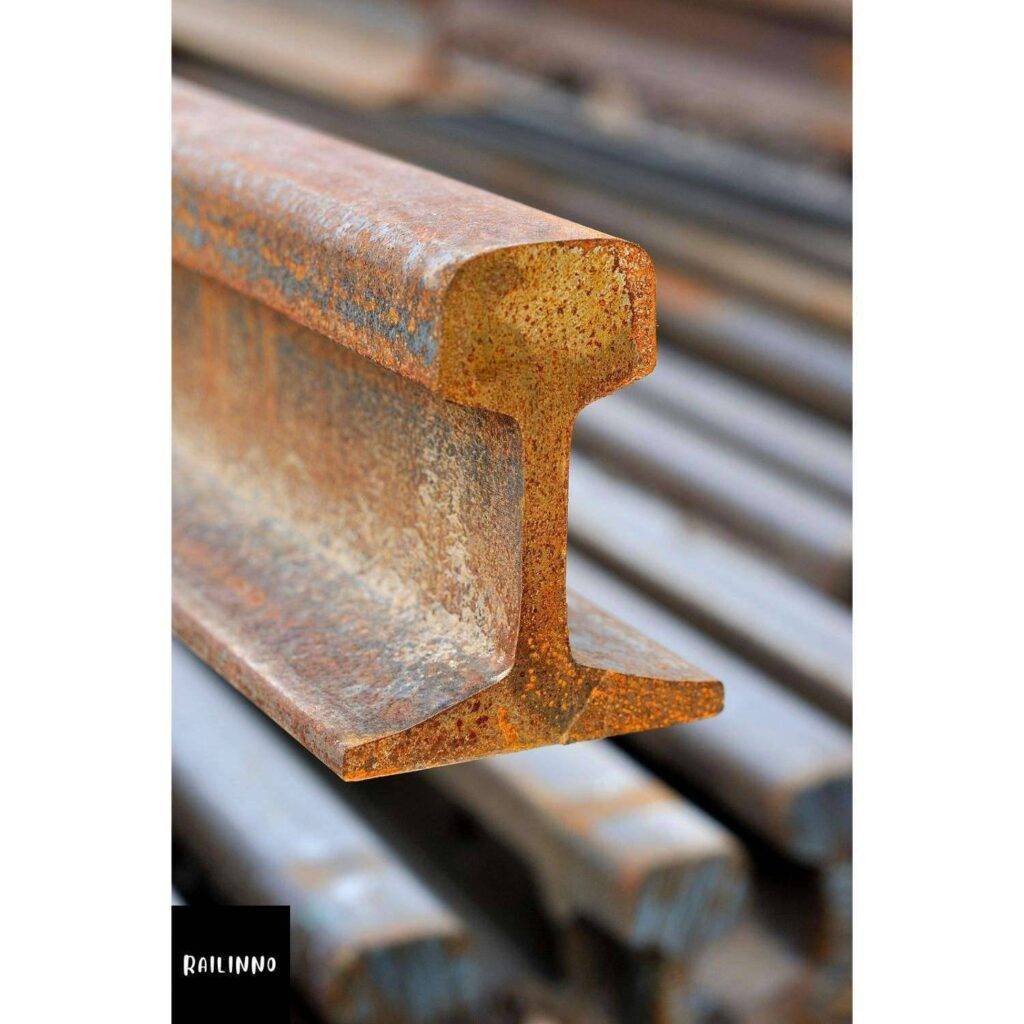Red Alert: How Wheel Rail Wear is Affecting the Safety and Efficiency of Rail Transportation
Abstract
It’s amazing how something as mundane as the railway track can make or break a nation’s economy. The railways have been a crucial backbone of countries all over the world, How Wheel Rail Wear is Affecting the Safety and Efficiency of Rail Transportation?
The rolling stock is the king of the railways, and yet it is the railway track that supports the majestic wheeled monarchs. Did you know that excess wheel rail wear can cause derailments, increase maintenance costs, and decrease rail capacity? I bet you didn’t.
The rolling stock and the railway track are integral components of the railways, and while many people forget they exist, they must function flawlessly to ensure that goods and people move safely and efficiently. When it comes to wheel rail wear, the track and rolling stock engineering community is responsible for keeping the railway infrastructure in prime condition, ready to tackle the ever-growing demand for transportation.
So let’s delve into the world of wheel rail wear and find out how these unsung heroes keep our economy rolling. From the gleaming trains in Tokyo to the rust-colored steam engines in India, wheel rail wear is a universal problem.
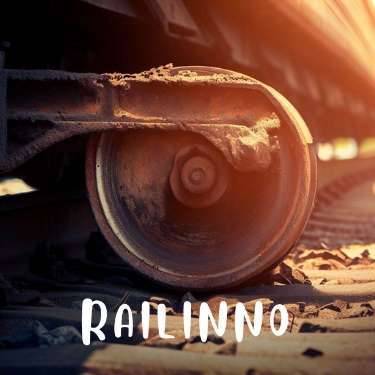
As we listen to the clattering of railway cars passing by, it’s easy to forget the critical role that rolling stock plays in our economy. But as both frequency and loads increase, the task of keeping these massive machines running smoothly becomes more critical than ever.
In recent months, there has been a growing concern among experts that wheel rail wear may be impacting the safety and efficiency of rail transportation. This phenomenon is particularly dangerous as the result could turn out to be dangerous – even fatal – in the case of derailments or accidents.
Cracks, breaks, and misalignment are all signs of wear and tear that could have disastrous consequences for everyone involved. But the real issue is not just that excessive wear and tear might pose a threat to our highways – it’s that the railway industry needs to embrace modern technology in order to mitigate the risk associated with wheel rail wear.
One of the most significant challenges that the railway industry is grappling with is how to prevent the occurrence of wheel rail wear. It’s not enough to simply monitor freight and passenger trains as they roll along.
Instead, we need an approach that gets ahead of the problem before it becomes a serious accident hazard. The good news is that technological innovations have come a long way over the past few years, offering some hope for a safer railway future.
In fact, there are now a whole host of novel solutions that are on the horizon for railway companies everywhere. One such technology is the use of artificial intelligence to detect wheel rail wear.
By analyzing patterns and identifying warning signs, this system can alert operators to potential problems in real-time. And as we know, early detection is critical if we want to prevent derailments and accidents.
Another innovation is the development of self-lubricating wheelsets. By reducing friction between the wheel and the rail, this technology could drastically reduce wear and mitigate the risk of accidents occurring.
Of course, it’s not just technology that can help us solve this problem. Better organizational processes are just as important.
From more consistent wheel and rail monitoring to a more standardized approach to maintenance, there are plenty of ways that we can improve our railways. It’s also worth noting that advocating for increased funding for railway infrastructure and operations is essential if we want to ensure that these systems remain healthy, safe, and high-performing.
At the end of the day, the issue of wheel rail wear is a complex one – and one that requires a multifaceted approach. But it’s vital that we take this issue seriously.
After all, the safe and efficient transport of goods and people is critical to our modern economy. By leveraging technological advancements, better organizational processes, and smarter infrastructure investment, we can continue to build a brighter future for railways, even as we grapple to keep pace with unprecedented levels of growth and demand.
Table of Contents
1. Introduction
Rail transportation is known as a reliable way to commute or transport goods, but the wear and tear of wheel-rail systems is a growing concern. This issue affects tracks and puts passengers and freight at risk, requiring the effort of rail companies and governments to reduce.
Up-to-date technology, frequent inspections, and track maintenance management are key to keeping rails safe and efficient. Neglecting this aspect can lead to train accidents, derailments and disasters that cost lives and finances.
With increasing trains each year, track maintenance management is critical. The rail industry must take proactive measures to ensure safety and reliability by improving track maintenance management perpetually.
2. Wheel-Rail Interaction
The wheel-rail interaction is crucial for safe and efficient rail transportation. It is important to detect potential problems early due to the widespread use of rail transportation in the US and worldwide.

One growing concern is automatic wheel wear measurement, which is a key factor in maintaining rail transport safety. The ability to measure the wear of the wheel automatically is critical to determine when a wheel reaches the end of its life.
This data is used to schedule maintenance and replacements, if needed. However, making these measurements presents challenges.
One is ensuring measurement equipment accuracy and reliability, while another involves achieving consistent measurements for varying wheel shapes and sizes. The development of automatic wheel wear measurement systems is fundamental to ensuring safety and efficiency in rail transport.
As advancements progress, accurate measurement of wheel wear and early warnings for preventing disasters are attainable.
3. Wear and Tear
Railway infrastructure wear and tear is a critical concern that needs immediate attention. As systems age, wheels and rails naturally wear, causing safety concerns and reduced efficiency.
Monitoring this wear is crucial to ensure safe and efficient operation. Rail operators and infrastructure managers use various wear measurement techniques, such as ultrasonic, optical, and mechanical methods to gather critical data.
However, these technologies must keep up with advancements in rail transport tech. Implementing monitoring tools too late can lead to derailments with huge environmental and economic consequences.
Traditional inspection techniques can be labor-intensive, expensive, and time-consuming, making it challenging to repair, upgrade or replace railway assets at the right time. It’s vital to implement advanced technologies that can predict rail infrastructure wear and tear, improve safety and efficiency, and minimize maintenance costs.
Such investments will ensure that rail transport remains a reliable and sustainable mode of transportation. To conclude, mitigating wear and tear risks on rail infrastructure requires careful consideration, advanced condition monitoring tools, investments in research and development, and reliable public-private partnerships.
Rail transport innovations must keep advancing to meet market demands.
4. Impacts of Wear
Rail transportation is impacted by wear that affects safety and efficiency. Wheel rail wear results from high friction and causes gradual deterioration of steel wheel and rail surfaces.
Risks include rolling contact fatigue, head checks, and cracks that lead to derailment and loss of lives and property. Wear increases maintenance costs, reduces efficiency, and disrupts services.
To mitigate these effects, periodic inspections and maintenance are necessary. Rail operators must also invest in diagnostic technology to detect wear and evaluate its impact.
This will help prolong the life span of wheelsets and rails, improve rail asset management, and enhance safety and efficiency. Timely intervention is critical for ensuring a reliable rail transport system.
5. Degradation of Safety
The railway industry faces a crucial issue: degradation of safety due to wheel rail wear. This dangerous circumstance demands immediate attention and innovative solutions to keep the railway system safe and efficient.
Neglecting the problem could have catastrophic consequences. Heavy usage and maintenance neglect contribute to the problem by accelerating wear and tear of train components.
Worn wheels can damage tracks and cause derailments. Environmental factors like temperature and humidity levels also affect wheel and rail performance, leading to catastrophic accidents if not managed properly.
Lateral and longitudinal profiles and flange climb are further factors in rail transportation safety degradation. Railway track engineers must optimize upkeep measures with preventative maintenance and advanced technologies like sensors, analytics tools, and machine learning algorithms.
Viable solutions are available. With regular inspections and replacement of train components, maintenance plans prioritize a safe, reliable, and efficient rail system.
Predictive analysis and monitoring systems identify errors and maintenance needs before they become catastrophic. Innovative engineering solutions like improved steel compositions or new anti-wear coatings diminish the effects of wear on trains and tracks.
Prioritizing commuter safety over corporate interests is critical. With cooperation and determination of railway track engineers globally, the railway industry can thrive and evolve into a sustainable, reliable, and safe transportation option.
6. Causes of Wear
Rail transportation may be associated with efficiency and reliability, but it’s not immune to wear and tear over time. One particular challenge is rolling contact fatigue (RCF) caused by the repeated contact between the wheel and rail damaging both materials.
RCF causes rough surfaces and cracks, and it stems from various factors, including outdated rail materials, wheel design, and track maintenance issues. Varied factors such as temperature changes and speed variations can exacerbate wear and tear too.
There is no easy answer to these issues, so researchers explore various solutions, from better maintenance to new materials. As rail travel remains crucial to transportation needs, it’s crucial to take these challenges seriously and work towards a reliable and safe infrastructure in the years to come.
7. Fatigue and Fracture
Railway rolling stock is crucial for transportation worldwide. However, persistent wear on the wheel-rail system can impact safety and efficiency.
Railway operators, regulators, and users have expressed concerns about this problem. Fatigue and fracture are responsible for most wheel and rail degradation, caused by repeated and cyclic loads that damage the parts over time.
Detecting these failure modes is critical for railway rolling stock systems. Rolling contact fatigue (RCF) can contribute to fatigue fractures in most cases, leading to accumulated damage in the rail and wheel materials.
It’s essential to identify reliable ways to mitigate RCF’s impact, especially in high-traffic areas with heavy axle loads. Non-destructive evaluation (NDE) techniques can assess rail and wheel damage severity and extent.
Investigating cyclical loading impacts like dynamic train loads, track irregularities, and railway maintenance practices will help to understand fatigue and fracture mechanisms. The railway rolling stock sector needs to innovate and implement effective solutions to improve rail safety, service life, and maintenance budgets and reduce operational costs.
8. Rail Grinding
Rail transportation relies heavily on the relationship between the wheel and rail, though passengers tend to overlook its significance. This interaction is integral to the safety and efficiency of trains.
Wheels and rails are subject to wear and tear which can have dire consequences if left unaddressed. Rail grinding is the solution to this problem.
This process involves removing the metal from the rail surface, which restores the rail’s shape and prolongs its life. Nonetheless, grinding is not as straightforward as it seems.
Sparks and heat generated during grinding can ruin the rails if not monitored. Additionally, there are environmental and community concerns associated with grinding.
But cutting-edge technological advancements have enhanced grinding’s accuracy and efficiency, lessening its environmental footprint and optimizing its benefits to rail transportation. In essence, rail grinding is crucial in maintaining the safety and efficiency of train travel.
It may not be flashy, but it plays a crucial role in managing the wheel-rail interaction and ensuring that trains traverse tracks safely and smoothly.
9. Preventative Measures
Wheel rail wear is a major issue in rail transportation, endangering both safety and efficiency. There are, however, numerous ways to mitigate these risks, from basic maintenance to advanced technological solutions.
Routine inspection and maintenance, including examinations of wheel profiles and rail lubrication, can help forestall wear and tear, as can techniques like ultrasonic testing for cracks. Additionally, modern technology utilizing machine learning algorithms can predict component failures in advance, allowing for early intervention.
Investigating new materials and design options that can better handle heavy use is also critical, including composite materials, innovative suspension systems, and more. Preventing wheel rail wear is a multifaceted effort requiring a proactive approach, but it is vital to ensuring the eventual safety and efficiency of rail travel.
10. Monitoring Wear Behavior
Trains are a beloved symbol of long distance journeys, but maintaining them is vital for both safety and efficiency. As with any mechanical system, wear and tear is inevitable, which can negatively impact rail transportation.
Despite its seeming simplicity, monitoring wear is actually quite complicated. Traditional methods require manual inspection, which is tedious and prone to errors.
However, AI can significantly improve wear analysis and allow for proactive measures to be taken, such as adjusting speed limits or track section usage. This technology, though, raises a critical question: how can human decision-making fit into the equation? While it’s crucial to consider the role of human input in rail transportation, incorporating AI and wear monitoring can broaden the maintenance approach and ensure comprehensive, long-term solutions.
AI in RAIL may not be perfect, but it is a valuable building block for industry improvement.
11. Efficient Rail Transportation
Sustainability is a top priority, and efficient rail transportation has become a popular option for moving large freight across the country. However, rail transportation faces a significant challenge: wheel rail wear.
Wheels and rails wear and tear due to excess speed, heavy loads, poor track quality, and harsh weather conditions. The wear and tear of wheels and rails affects rail transportation’s safety and efficiency, causing derailments and costly repairs.
To mitigate wheel rail wear, various measures have been made, including lubrication and track maintenance, but more needs to be done. Unlike tire wear in road transportation, wheel rail wear can cause catastrophic derailments, risking lives.
Despite the challenges, there are still hopes for efficient rail transportation. Technological advancements, such as sensors, computer-aided simulations, and artificial intelligence, offer solutions to address wheel-rail wear.
Monitoring the interaction between wheels and rails can predict when repairs are required, enabling maintenance measures to be taken before a severe incident. In conclusion, efficient rail transportation is critical for sustainability, and rail companies must continue to address the ongoing problem of wheel rail wear.
The need is essential for the safety of everyone and to ensure that goods are efficiently delivered to their destinations.
12. Conclusion
Wheel rail wear had a significant impact on rail transportation safety and efficiency. Despite technological advancements, maintenance practices, and testing procedures, wear persists as a challenge for the railroad industry.
It has caused many train derailments, collisions, and fatalities, and much remains to be learned about it. The problem will likely not disappear soon, given the ever-growing demands to move freight and people faster and further.
This makes rail and wheel maintenance difficult, and we cannot ignore the issue. Therefore, we need more research, innovation, and collaboration between railroads and technology providers to reduce wear’s impact on rail transportation.
We must work together to ensure that America’s rail system remains safe, efficient, and reliable for decades to come.
Recap
In the world of railway track engineering and rolling stock engineering, the topic of wheel rail wear is well-known, yet never ceases to amaze us. The complex interplay between the wheels and the tracks, the friction and forces at play, the minute changes that can have major consequences, are all part of a mesmerizing dance.
And yet, as engineers, it is our job to stay on top of this unpredictable partner and find ways to mitigate its impact. Whether it be through novel materials, innovative designs, or greater attention to maintenance, we are constantly striving for new solutions to an age-old problem.
One thing is for sure, however: we can never rest on our laurels when it comes to wheel rail wear. The intensity of the forces at play, the diversity of operating conditions, and the constant push for greater efficiency and speed, all conspire to keep us on our toes.
But it is precisely through this ongoing challenge that our field continues to evolve and thrive. As railway enthusiasts, it is a source of wonder and fascination to witness the intricate workings of this technological marvel.
As engineers, it is a humbling reminder of the vast unknowns that still lay ahead, and the vital role we play in charting the way forward. So let us continue to delve deeper into the mysteries of wheel rail wear, pushing the boundaries of what is possible, and never losing sight of the awe-inspiring complexity of this field.
N.B. Images Reference: Unsplash.com, Canva.com, AI generated By Skillrails prompts
FAQ
What is the impact of wear and tear on railway infrastructure?
The impact of wear and tear on railway infrastructure can include reduced reliability, increased maintenance costs, and safety risks.
What is the importance of monitoring wheel wear in rail transport safety?
Monitoring wheel wear is important for rail transport safety because it helps detect and prevent derailments and other accidents caused by worn-out wheels.
What challenges must be overcome in measuring wheel wear?
Some challenges in measuring wheel wear include variations in wheel materials, complex wheel geometries, and accessibility to measuring equipment.
How can railway operators reduce wear and tear risks on their infrastructure?
Railway operators can reduce wear and tear risks on their infrastructure by implementing regular maintenance programs, using high-quality materials, and investing in advanced monitoring and inspection technologies.
NEED RAILWAY CONSULTING SERVICE AND CONTENT CREATION?
